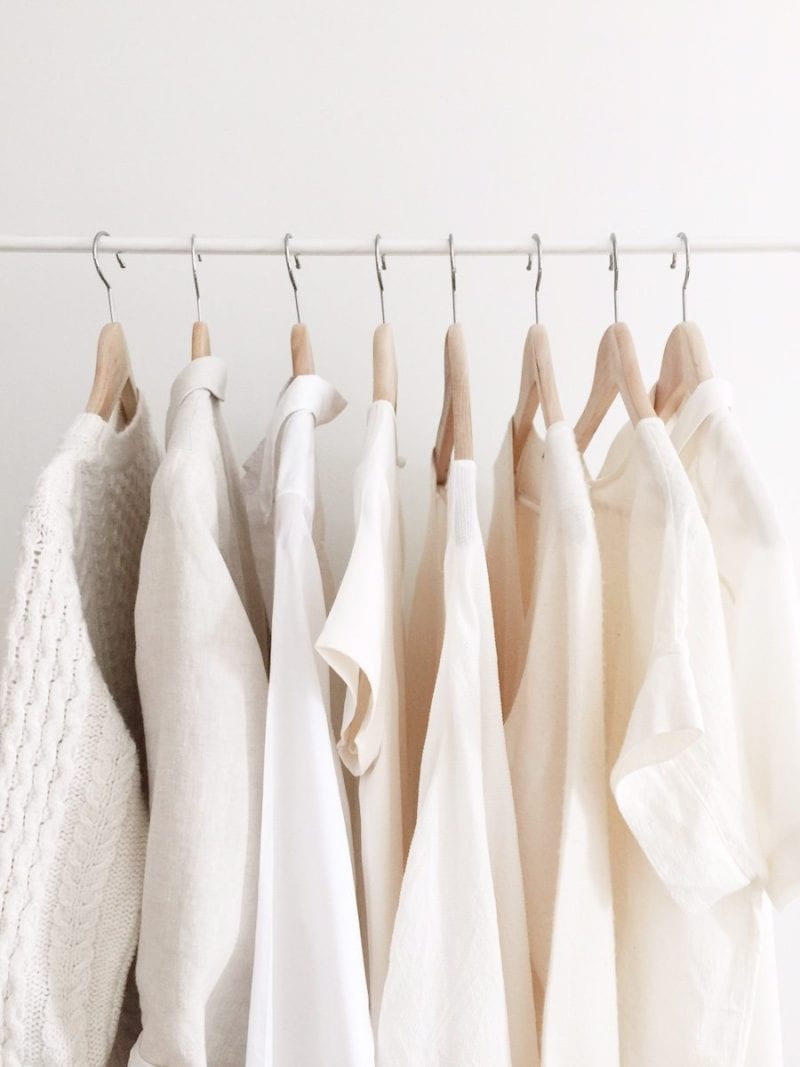To say the fashion industry is trend-based is an understatement. Trends come and go – whether clothing styles or “it” girls or even business models – so quickly that it is hard even for people who work in fashion to keep up. The newest trend in the industry, however, may catch some by surprise.
A bit unexpected: The concept of closing the clothing loop through recycling, donation and various other models is now the trend du jour for brands. From bigger retailers such as H&M, Madewell, and Patagonia to newer direct-to-consumer brands such as Reformation, M. Gemi, and yours truly – Cuyana — companies are driving increasing awareness of programs that leverage used clothing as a source of regeneration and offering rewards to do so.
Similar to “ethical fashion,” this new trend is propagating with a wide variety of models that make it difficult for the end consumer to discern which are best. In addition to the different types of models, there is often a lack of transparency with the end results, especially around donation programs.
The types of programs brands are employing fall primarily within three key categories: consignment models, donation models, and new, alternative methods, such as fiber processing – which brands such as H&M are focusing on and involves disassembles clothing to the fiber level, to be re-used in new production.
Consignment models can be direct or more implicit. Direct consignment models, exemplified by companies such as The RealReal or ThredUp, allow consumers to sell used pieces online. Pieces go through a curated vetting process, but consumers directly make a percentage of sales. These companies are providing an easy way for consumers to make some money on their used clothing – especially higher end pieces.
What’s interesting, however, is that some brands who offer donation programs are also participating in consignment, but behind-the-scenes. For example, American Eagle Outfitters asks consumers to drop off used clothing at any of their stores and states that proceeds from the program will be donated to the Student Conservation Association “empowering new generations of environmental leaders” (source: American Eagle blog post). While there is an element of donation, the clothes are actually being sorted to “determine their most effective next use” which includes being sold as second hand clothing.
Many other retailers also message around the word “donation” for receiving used clothing, and rather than direct donations of the clothing, donations are made from potential sales of the clothing to secondhand stores. Yet, even more ambiguous, some brands tout donation programs with no information whatsoever about where the donations are going.
When we launched Cuyana in June 2013, we knew that we wanted to include a donation model and we began to research the various means of doing so. We had a vision of finding a nonprofit partner that would enable impact in the most direct and effective way possible; however, much of the research we found led us to organizations where clothing was either resold overseas or ends up as landfill waste. (In the meantime, our Lean Closet donations had been going to various local nonprofit partners.)
Through our research, we found some problems with the pre-existing models. Donation models were usually not transparent: like previously mentioned, the word “donation” was being used casually and there was no clarity, no directness, of exactly how the clothing donated was being used. Consignment models were tricky because of a similar issue; if clothing wasn’t able to be sold immediately, it was re-sold overseas. Alternative methods were innovative, but certain materials can’t be broken down to the fiber level and re-used, and consequently, what was labeled as being “recycled” was actually also being sold overseas or thrown into landfill. Overall, there was a pervading sense of ambiguity and utter lack of transparency with all of the pre-existing models.
… a piece of clothing that is not helping one woman live her most full life is now the same piece of clothing that enables another women to gain a fresh start in life.
For the last two and a half years, we have made it easy for customers to donate pieces of clothing that are not helping them live their best lives through a simple step in our site’s check-out process. This fall, we are thrilled to finally have found the right nonprofit organization to become our official Lean Closet partner: H.E.A.R.T., which is an organization created to help victims of abuse move forward and build new lives. By working with H.E.A.R.T., we are finally able to leverage fashion as a regenerative force of empowerment in the most direct, transparent way possible: a piece of clothing that is not helping one woman live her most full life is now the same piece of clothing that enables another women to gain a fresh start in life. Through this direct partnership with H.E.A.R.T., we are able to ensure that donations are true donations: that used clothing will benefit people locally and will not be sent oversees or wind up in landfills.
After having done our homework, we offer a few tips for consumers about the best ways to recycle clothing:
- Don’t just jump on the bandwagon to donate or recycle because other brands are doing so, or other consumers are doing so – for consumers, especially because of the rewards (discounts, credits) that brands are offering. Think carefully about what’s in your closet and if you truly wear it and love it. If you do, keep it! We don’t believe in a message of minimalism, but rather of loving everything you own.
- If you do decide to eliminate some pieces, do your research. Look deeper into the “recycle” or “donate” messages that brands are proliferating now. What do these words that will be disseminated in all marketing messages actually mean and how will they affect change?
- Finally, think about what is most meaningful to you, at this point in your life. If it making some money from pieces you invested in, that is great. If it about helping others in need, that is wonderful. Your decision to donate or recycle should be purely your own and something you are excited about and will be happy to share with friends and loved ones.
There isn’t a single model that works best ubiquitously to close the loop on fashion and reduce waste, but whichever options you do participate in, you should participate as a fully-informed, thoroughly-educated consumer.
Images via Lee Vosburgh













4 comments
Can you email the contact info for H.E.A.R.T? I cannot seem to find it anywhere.
Thank you.
Great article. Since donating to large retailers is a tricky decision, are the salvation army and goodwill chains the better decision? I always donate there.
Wow – I had no idea that some donation programs resulted in the clothes being sold! Thanks for an informative article.
http://www.kelseymarie.co
Great article! What is the most ethical way to dispose of or recycle clothing that isn’t high quality enough for others to wear? For example, I have a couple of tops that have iron marks on them — thanks, polyester — or holes that aren’t able to be mended. I would hate to simply put them in a donation bin, but I also don’t want to put them in the trash. What would you recommend?